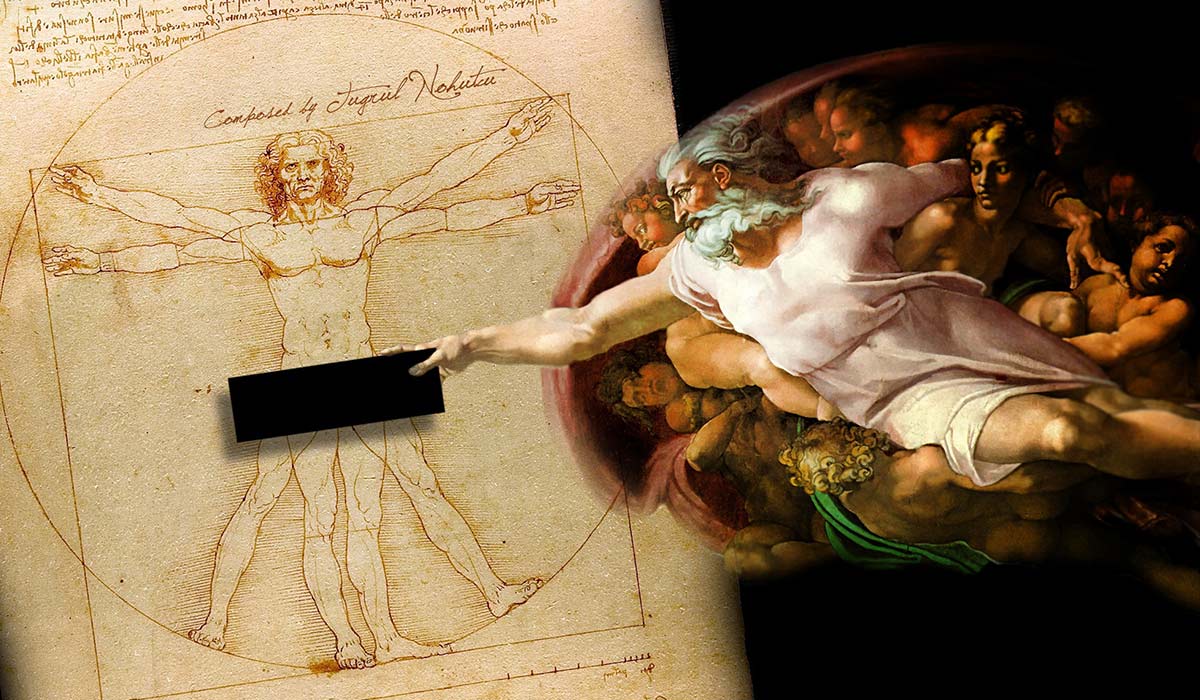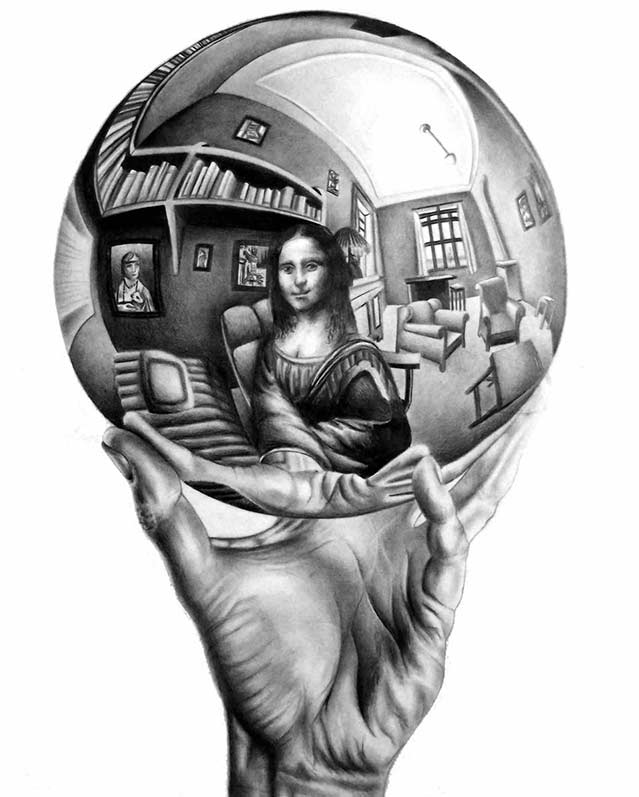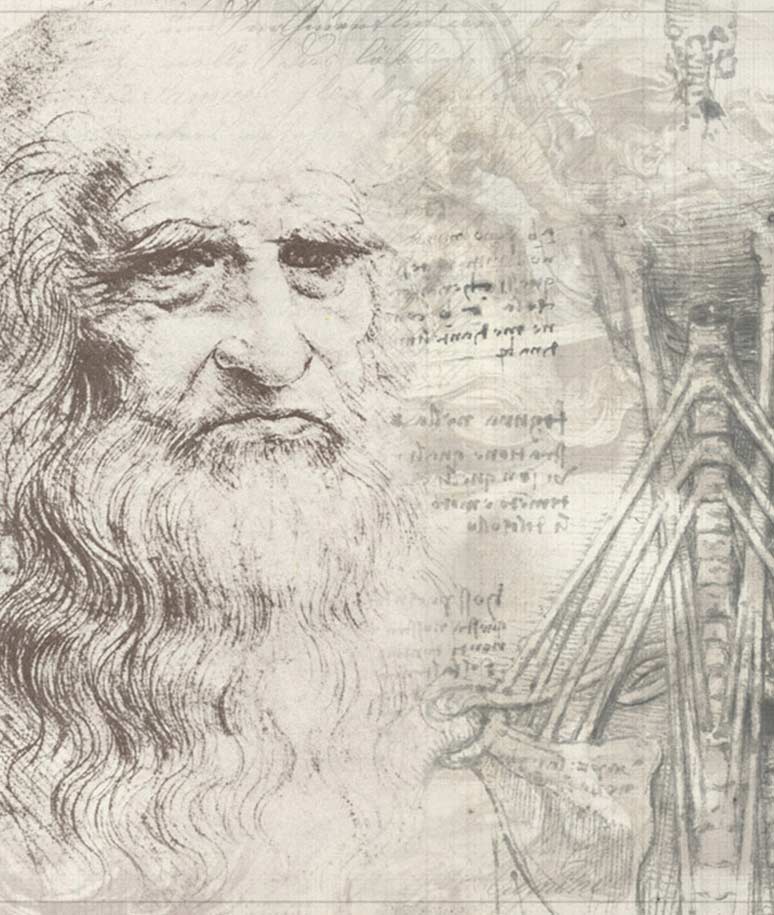
Michelangelo and Leonardo Da Vinci couldn’t stand each other
You might think that the two artists, who both lived in Florence in the late fifteenth and early sixteenth centuries, could’ve learned from one another, shared secrets, or otherwise bonded over their mutual passion. Instead, each thought of the other as inferior. An anonymous Florentine author, known as the Anonimo Magliabechiano, observed a tense interaction between them that left an impression. Supposedly, some men were gathered debating a passage from Dante when they spotted Da Vinci walking by. The men waved Da Vinci over to them, his reputation for intelligence preceding him. As they began to pose their question about the writing, Michelangelo came passing by.
What happened next (and whether or not it happened at all) is up for debate, but the writer maintains that Da Vinci pointed to Michelangelo and said that he could explain the passage. Michelangelo, perceiving a slight, offered a gruff rebuttal: “You explain it yourself, you who designed a horse to be cast in bronze but couldn’t cast it and abandoned it in shame.” For the sake of charity, let’s assume that some of the humor of this exchange gets lost in translation; either way, it proves that neither of the artists were gifted insult comics.
Despite the wildly tangential nature of Michelangelo’s retort, it seems to have hit Da Vinci where it hurt. The writer: “Leonardo remained there, his face turning red.”
Whether or not this exchange took place, it is meant to be an emblematic example of the uneasy relationship between the two men. Moreover, there is plenty of compelling historical evidence that the feud between the artists was widely known. Case in point, the Florentine government commissioned Da Vinci and Michelangelo to paint frescoes at the Council Hall of the battles of Anghiari and Cascina, respectively, in the same year. Giorgio Vasari, a major historian from the era, makes it clear that this was meant to be a contest. Jonathan Jones, author of a book on the rivalry between Da Vinci and Michelangelo entitled The Lost Battles, illustrates this point. The Florentine government was betting that both artists would seek to outdo the other, and that the city would reap the benefits in the form of great civic artwork.
Jones also wrote in The Guardian of another contest between Michelangelo and Da Vinci
This one was unspoken, and the title at stake was Most Realistic Work of Art. This contest pits Da Vinci’s Mona Lisa up against Michelangelo’s David. Modern viewers have to make some allowances on Da Vinci’s behalf. Though it has been faded and damaged over time, Mona Lisa was making Da Vinci famous from the time that it was just a drawing. Many of his contemporaries hailed it as the most realistic painting ever created. On the other hand, even amateur art historians know the significance of David where lifelike sculptures are concerned. Jones never declares a winner between the two masters or their works. He simply points to the historical outcome.
Two years after being commissioned to paint the council hall in Florence, Michelangelo was invited to Rome to assume patronage under Pope Julius II.
This invitation would lead, conspicuously, to Michelangelo’s Sistine Chapel ceiling paintings, as well as many other prominent works. One account had Michelangelo burning all his initial sketches for the Sistine Chapel, wanting people to think that what they were seeing was his improvised first draft, his every brushstroke guided by angelic agency. Meanwhile Da Vinci kicked around northern Italy before moving to France to live out the last years of his life, never having completed the Mona Lisa or his Council Hall painting to satisfaction.
The Feud between Da Vinci and Michelangelo seems frivolous at best, especially when you consider that the contest it inspired didn’t lead to a single viewable work of art (the closest today’s art connoisseur can come is seeing copies of the concepts made by Peter Paul Rubens and Bastiano da Sangallo, respectively). That being said, rivalries between prominent contemporary artists are extremely common throughout history, and it’s impossible to quantify the extent to which competition has fueled or inspired new work.
But imagine, just for fun, what if Michelangelo and Da Vinci had been friends instead of rivals. You might reasonably conjecture that they’d have been commissioned to paint their Battles as partners instead of in competition. And perhaps we’d have one spectacular fresco, still intact in Florence, rather than the two incomplete, failed paintings that exist only as stillbirths crippled by vanity and jealousy.
Featured Gallery
Your Thoughts
- Do you have a preference for Da Vinci or Michelangelo?
- At what point does a healthy drive to achieve great things become a mania to be better than everybody else?
- Are you surprised to learn that “trash talking” existed between the big league “players” of the 15th and 16th centuries? Even between rival artists commissioned to “illuminate” scenes from the Holy Bible?









































